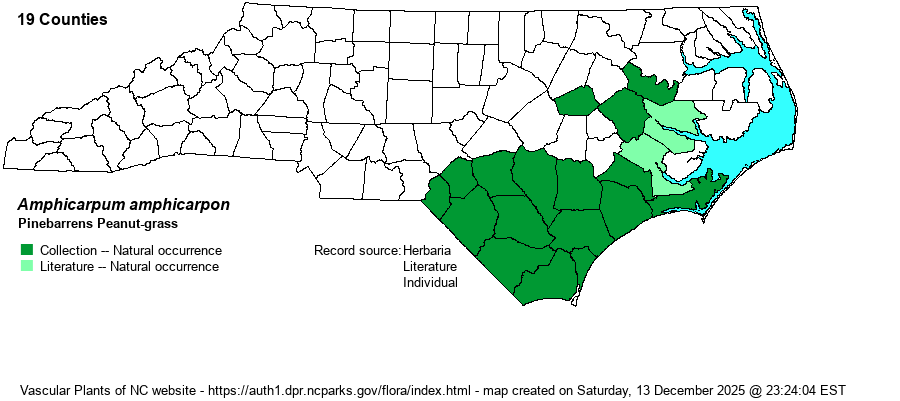| Author | (Pursh) Nash | |
| Distribution | Southern and central portions of the Coastal Plain; not known north of the Roanoke River, though southeastern VA has a few records.
Coastal Plain, southeastern MA to southeastern SC. | |
| Abundance | Frequent in the southern Coastal Plain east to Carteret and Craven counties; uncommon into the central Coastal Plain. Absent from the Sandhills proper. Despite it occurring in nearly 20 counties, including specimens from all of the southern ones, it is considered as a Watch List species. | |
| Habitat | Wet pine savannas, wet flatwoods, seasonally ponded depressions, small Carolina bays (Scotland, Hoke, Cumberland counties); often associated with sphagnum moss. This annual species responds positively and quickly to fire. |
| Phenology | Flowering and fruiting August-October. | |
| Identification | This species is mostly 1-2 feet tall, with the stem and leaves bristly-hairy, and the leaves ascending. The inflorescence is raised above the leaves, narrow and with short, nearly erect branches. Slender, below-ground rhizomes produce florets at their tips, which are fertile; above ground florets are sterile. | |
| Taxonomic Comments | In most older texts it is named as A. purshii Kunth.
| |
| Other Common Name(s) | Pursh's Blue Maidencane, Hairy Maidencane, Blue Maidencane (used for both Amphicarpum species, and thus not suitable as a common name. | |
| State Rank | S3 | |
| Global Rank | G3G4 | |
| State Status | W1 | |
| US Status | | |
| USACE-agcp | FACW link |
| USACE-emp | FACW link |

